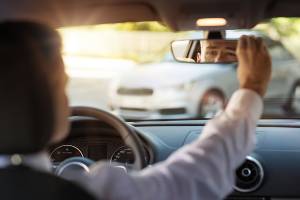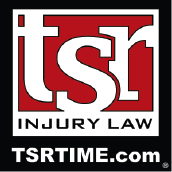Fault for a Car Crash When a Vehicle is Backing Up
 Would you be surprised to learn there are thousands of car crashes that occur each year when drivers are backing up?
Would you be surprised to learn there are thousands of car crashes that occur each year when drivers are backing up?
This includes crashes in parking lots and crashes involving drivers backing out of driveways and into lanes with passing traffic. Even though many of these crashes occur at relatively slow speeds, they can result in significant injuries that may have long recovery times. For example, backing up crashes could result in broken bones, serious bruises and whiplash.
Below, TSR Injury Law’s experienced attorneys discuss fault for these crashes. While the driver who was backing up is often at fault, there are times when fault may be shared. Sometimes both drivers involved in a backing up crash were negligent.
If you were injured in a crash in Minnesota, TSR Injury Law may be able to help you seek compensation for your damages. We offer a free consultation and do not charge upfront fees.
Why do Backing-Up Accidents Happen?
Like most car crashes, backing-up accidents are caused by some form of driver negligence. Unfortunately, drivers are often much too reckless when backing up, whether they are backing out of a parking space or driveway. They rely on their mirrors and do not turn to look behind them. Even if they do look, they may pull out way too fast.
Sometimes drivers in passing cars are at fault for trying to pass instead of stopping. For example, if a driver is already halfway out of a parking spot and a car tries to swing around, the driver of that car may be found liable.
Sometimes drivers take unnecessary risks when backing up. For example, drivers backing out of a driveway onto a main road may try to do so quickly because they do not want to wait longer for traffic to clear. Oncoming drivers may not be paying attention and may not be able to slow down quickly enough to avoid a crash.
Reasons Drivers Who Were Backing Up are Often at Fault
Typically, drivers on the road or through lane you are backing into have the right of way. That is one of the main reasons why drivers who are backing up are commonly found at fault for these crashes. If they are not 100 percent at fault, they likely still bear most of the fault.
There are exceptions to this general rule, however. If the oncoming driver was negligent in some way, he or she may be partially to blame. Examples of negligence that could lead to a backing-up crash include:
- Speeding – Even though a speeding driver may have the right of way, speeding is still negligence. Driving over posted speed limits puts other drivers at risk because you have less time to react to dangerous situations.
- Intoxication – If a driver was drunk or on drugs during the crash, he or she is likely to be found partially to blame for the crash.
- Failing to yield – When another driver has the right of way, you are required to yield. Unfortunately, drivers are often impatient and do not want to wait for drivers to finish backing out.
- Reckless lane changing – If a driver attempts to back out into a lane where traffic is clear, but another car moves into that lane at the last second without signaling, he or she may be held liable. Even if the oncoming driver signals, he or she may be held partially liable for changing lanes because the driver who was backing up thought the lane was clear.
Determining Fault for Parking Lot Crashes
Many backing-up crashes happen in parking lots. As there is a lot of activity in parking lots, determining fault for crashes may be difficult.
Below we discuss some common types of parking lot crashes and how fault may be assessed.
Backing Into a Parked Car
As the parked car was not moving, the driver of the other vehicle is likely to be found at fault for the crash. That said, if the car is illegally parked, the owner/driver of that vehicle could be found at fault. You would likely need to prove it was difficult to see the parked car if you were the one that hit it.
Backing Into a Moving Car
You are required to look behind you when backing out of a parking space to avoid hitting moving cars, parked cars or pedestrians. If you were the one backing up and a crash happens, you are likely to be found at fault. There may be an exception if the other driver was not paying attention or was speeding.
Two Cars Back Up at the Same Time
It is likely that the drivers of both vehicles will be partially responsible for the crash. However, one driver may be more at fault than the other, such as if one car was much further out of the parking spot than the other.
Preventing a Crash When Backing Up
The key to avoiding a crash in these situations is to be cautious. Take your time, look behind you, and if necessary, wait for traffic to pass. There is no need to rush because that may make a crash more likely.
Many vehicles are equipped with backup cameras. While these are helpful, you should not use them as a substitute for checking for traffic. Make sure to use your mirrors, peripheral vision and turn your head to be sure the path is clear.
Contact TSR Injury Law Today for Legal Help
Unsure of your legal options after a car crash?
TSR Injury Law is here to assist you in recovering compensation for your damages. Our Minneapolis car accident attorneys have helped numerous crash victims recover compensation – over more than 20 years we have secured $1 billion in compensation on behalf of our clients.
Schedule a free legal consultation today to learn more about how we may be able to assist you. There are no upfront fees or legal obligations. Our goal is to recover full compensation for your injuries and damages.
Contact us today. We are here to help: (612) TSR-TIME.



